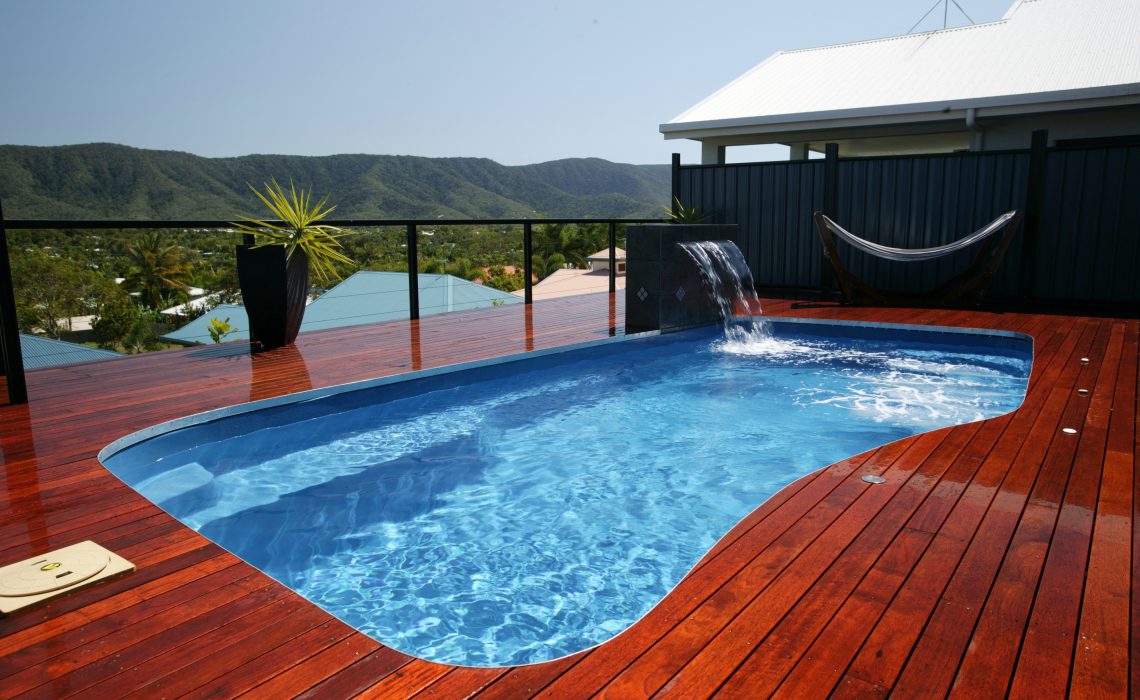
Swimming pool filters are the way your pool, hot tub, plunge pool or other recreational water maintains visual clarity and proper sanitation, so it doesn’t transmit infectious diseases. There are several different types of filters, and you can consult with a pool-maintenance professional about the best type of filter for your pool.
Sand Filters
This filter has a bed of filter sand that the water is pushed through. The dirty water goes in the top, and the clean water exits the sand into a set of tubes at the bottom. As the sand becomes clogged with debris, the water flow drops and more pressure is applied by the pump. Backwashing is the way to clean a sand filter. The water is pumped in reverse and the waste water is discarded. After the filter is backwashed, it is rinsed to repack the sand, so it is ready to filter again. When the sand becomes soiled, it can be easily and inexpensively replaced. However, this is not the best type of filter.
Cartridge Filters
Cartridge filters are economical and low maintenance. They have been used in residential pools since 1970 and use sand particles and paper cartridge filters. The water passes thought a filter material in the cartridge and when it gets dirty, the cartridge is changed. They don’t clog as quickly as sand filters and can be easily hosed-off for cleaning. They are useful for places where the backwash from sand filters is not allowed. There are inexpensive filters that need to be replaced more often, and there are more expensive filters that may last up to five years. Cartridge filters remove smaller particles than sand filters but are not as efficient at DE filters.
Diatomaceous Earth (DE)
Diatomaceous earth filters use fossilized exoskeletons of tiny diatoms as the filter material. They are very small and filter debris as small as five microns. They are cleaned by backwashing the same was as sand filters, and they are then recharged with more DE powder. The powder is poured through a slurry into the skimmer where it then coats the filter grids. These filters can withstand a higher pressure than cartridge filters, which may cause some inefficiency. In some places, the backwash from DE filters needs to be discarded carefully so as not to damage sewer systems.
Which Pool Filter Is the Best?
Each filter has its strong and weak points, and the best may differ for each application. All three of these filters work well. It may be possible to add some DE to a sand or cartridge filter if you want to increase its ability to filter smaller particles. Another way to solve the small particle problem is to add flocculants to the pool water. This creates big particles out of several small particles. For those who would rather not worry about their pool throughout the swimming season, the DE is the best choice. Here are some guidelines for selecting a filter:
• Sand is a good choice if you want a filter that has a low chance of breaking down.
• Cartridge is the best for low maintenance. Cartridges are easy to replace.
• DE will give the clearest water.
Size Matters
It’s important to select the correct size pool filter for your size pool. All of the water should cycle through the filter every 12 hours. First, find out how many gallons of water is in your pool. You can then check the gallon-per-minute capacity of several different types of pumps. Most pumps can turn over the water faster than twice in 24 hours, so to save electricity, they use a two speed pump that meets the minimum turnover rate.
You also need to make sure the flow rate of your pump does not exceed the minimum flow-rate of your filter. You can ask a professional to calculate it for you. If you have a sand filter and the pump is too powerful, you’ll start to see sand in the bottom of your pool. Never open your pump when it’s under pressure because it could cause injury. If your pump is leaking, it’s best to have it inspected by a pool-maintenance professional














